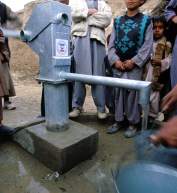- Agriculture and Food Security
- Democracy, Human Rights and Governance
- Economic Growth and Trade
- Education
- Environment and Global Climate Change
- Frontiers in Development
- Gender Equality and Women's Empowerment
- Global Health
- Science, Technology and Innovation
- Water and Sanitation
- Working in Crises and Conflict
- Responding in Times of Crisis
- Crises and Conflict Countries
- How We Do It
- Where We Work
- Afghanistan
- Benin
- Bosnia and Herzegovina
- Bulgaria
- Burkina Faso
- Burma
- Cambodia
- Cameroon
- Central African Republic
- Chad
- China
- Comoros
- Côte d’Ivoire
- Democratic Republic of the Congo
- Ecuador
- El Salvador
- Ethiopia
- Fiji
- Ghana
- Guatemala
- Haiti
- Honduras
- Horn of Africa
- India
- Indonesia
- Kenya
- Lesotho
- Liberia
- Madagascar
- Malawi
- Mali
- Mauritania
- Montenegro
- Mozambique
- Niger
- Pakistan
- Papua New Guinea
- Paraguay
- Philippines
- Republic of the Congo
- Senegal
- Somalia
- South Sudan
- Sri Lanka
- Sudan
- Syria
- Tanzania
- Thailand
- The Gambia
- The Sahel
- Tunisia
- Turkey
- Tuvalu
- Vietnam
- Yemen
- Why It Matters
- How To Help
- Resources
- Building Resilience
- Conflict Mitigation and Prevention
- Disaster Risk Reduction
- Peacebuilding and Reconciliation
- Promoting Peaceful Political Transitions
- Providing Safe & Secure Environments for Development
- Recovering From Crisis
- World Humanitarian Day
- Responding in Times of Crisis
Horn of Africa

On The Impact Blog
One Year after Famine: the Need for a Continued Comprehensive Response
Nancy Lindborg, Assistant Administrator for the Bureau for Democracy, Conflict and Humanitarian Assistance
One Year Later: Reflections on the Humanitarian Response in the Horn
Mark Bartolini, Director, USAID Office of U.S. Foreign Disaster Assistance
Looking Back on Famine and A Smarter Response in the Horn
Dina Esposito, Director of the Office of Food for Peace
In 2011, the eastern Horn of Africa was reeling from the region’s most severe drought in 60 years. Crops failed, livestock died, and prices in local markets were too high for most people to buy what was needed to feed their families.
And in Somalia, more than 20 years of conflict, combined with severe drought and restrictions on humanitarian access, created an unabated humanitarian crisis. On July 20, 2011, the United Nations declared that famine conditions were present in two areas of southern Somalia, and famine conditions spread to four additional areas of southern Somalia by mid-September 2011.
At the height of the crisis, more than 13 million people – greater than the populations of Los Angeles and New York City combined – were in need of life-saving assistance in Djibouti, Kenya, Ethiopia and Somalia.
The outpouring of humanitarian assistance from around the world helped provide food, water, shelter, health care, and other life-saving aid to those in need across the Horn. Due in large part to the vast humanitarian assistance, famine was no longer present in Somalia by mid-February 2012.
Progress has been made over the last year, yet some 9 million people are still in need of assistance in the Horn of Africa. The 2011drought left many families with next to nothing, and they continue to struggle in 2012. Conditions across the region remain at crisis and emergency levels, and these levels are expected to continue through at least September 2012. In Somalia, mortality rates are still among the highest in the world, and the fragile gains that have been made could backslide if robust humanitarian assistance is not sustained.
The United States remains the largest provider of humanitarian assistance to the Horn of Africa, providing more than $1.24 billion to help those in need since 2011.
Latest Horn of Africa Fact Sheet
Horn of Africa Fact Sheet #28 (422kb PDF) and map (1.41mb PDF)
| NUMBERS AT A GLANCE | Source | |
|---|---|---|
|
People Requiring Humanitarian Assistance in Kenya |
2.2 million |
OCHA – July 20, 2012 |
|
People Requiring Humanitarian Assistance in Ethiopia |
3.2 million |
OCHA – July 20, 2012 |
|
People Requiring Humanitarian Assistance in Somalia |
2.51 million |
OCHA – July 20, 2012 |
|
People Requiring Humanitarian Assistance in Djibouti |
180,000 |
OCHA – July 20, 2012 |
|
Number of Somali Refugees in Kenya |
533,730 |
UNHCR – July 31, 2012
|
|
Number of Somali Refugees in Ethiopia |
207,770 |
UNHCR – July 24, 2012 |
|
Number of Somali Refugees in Djibouti |
16,750 |
UNHCR – July 10, 2012 |






Comment
Make a general inquiry or suggest an improvement.